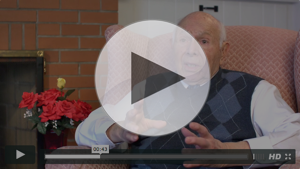Recently I read a newsletter article about how excited a regional medical system was to install ceiling lifts for patients in their hospital rooms. As a nurse who used to offer direct patient care, I was astounded at the “excitement.” Patient sling lifts (also called hoists), whether portable or ceiling, have not changed much since they were first introduced into the health care world years ago. The original idea had its origins in the automobile business where a hoist-type device was used for lifting or lowering heavy loads. To this day, patients typically report that sling lifts are not only humiliating but also uncomfortable, time-consuming and anxiety producing.
Caregivers lament the fact that these lifts still require physical exertion on their part and therefore can lead to injuries. Patients need to be log rolled from side to side in order to try and position the sling in the correct position. The sling is then hooked up to the hoist, the patient is lifted, swung to the side and placed in a chair/commode. If they do not land “just right” in the seat, manual lifting is required to help get them in an upright position and/or to remove the sling. In some cases, patients are left to sit on uncomfortable slings for hours until it is time to return to bed.
Caregivers agree with patients that sling lifts, the most common portable version often referred to as “the Hoyer lift,” are time-consuming. Two caregivers are needed to transfer or re-position a patient this way and caregivers tend to be busy and not immediately available to assist each other. If a portable sling lift is used, caregivers also need to find one that is available when they need it (not an easy feat in most health care facilities - “HCFs”). Patients need to hope that they are given a sling dedicated for their personal use. This should be a “given” at all times but unfortunately it is a “dirty little secret” that this approach is not always followed by CNAs/PCAs in all HCFs. When asked why, the hushed answer is usually that it is either too expensive for everyone to have their own or they never receive the proper one back from laundering anyway. I could expound on the resulting risk of infection including antibiotic resistant organisms like C-difficle but I’m sure you get the picture.
What would be “exciting” would be an innovative device that would not require any manual exertion on the part of the caregiver, not need a second caregiver to assist, not require a sling, not require a hoist (like large inanimate loads require), be readily available, be comfortable and prevent patient anxiety and humiliation. Let’s throw in that a couple of bonus features. First, that since the device would be so convenient and easy to operate, patients would be getting in and out of bed more, thereby preventing pressure injuries and promoting circulation, respiration and overall wellness. Next, the device would prevent falls even more than hoists and much more than manual lifts. Now that’s all something that most caregivers would not only find exciting but be relieved about! HCFs would also be excited and likely having visions of workers compensation cost reductions, reduced staff turnover, reduced dollars being devoted to recruiting and training of staff and possibly higher Press-Ganey patient satisfaction scores.
I am “excited” to report that this innovative device actually exists! It has been described as “life changing” by patients, caregivers and family members and is called the AgileLife Transfer & Mobility System (AL TMS). I could expound on the various features and available accessories but since “seeing is believing,” I would suggest you view a “live transfer” at the following link: http://www.agilelifemobility.com/product
The AL TMS is a great fit for most patients in any setting and has enabled patients to remain at home safely. There is an in-bed scale and the wheelchair that comes with the system can convert to a commode; both prevent the need for other lifts during patient care. Patients can be boosted in bed, even if they are in a sitting position, with the touch of a button.
To be fair, I do understand why a regional medical system would be “somewhat excited” to have ceiling lifts since they still have an advantage over portable sling lifts and manual lifting. However for the sake of all immobile patients and their caregivers, I hope these same medical systems will become aware of and truly “excited” about the AL TMS, the first innovative, “no lift” approach to patient transferring and repositioning in decades. Imagine if all HCFs were equipped with this type of system!

